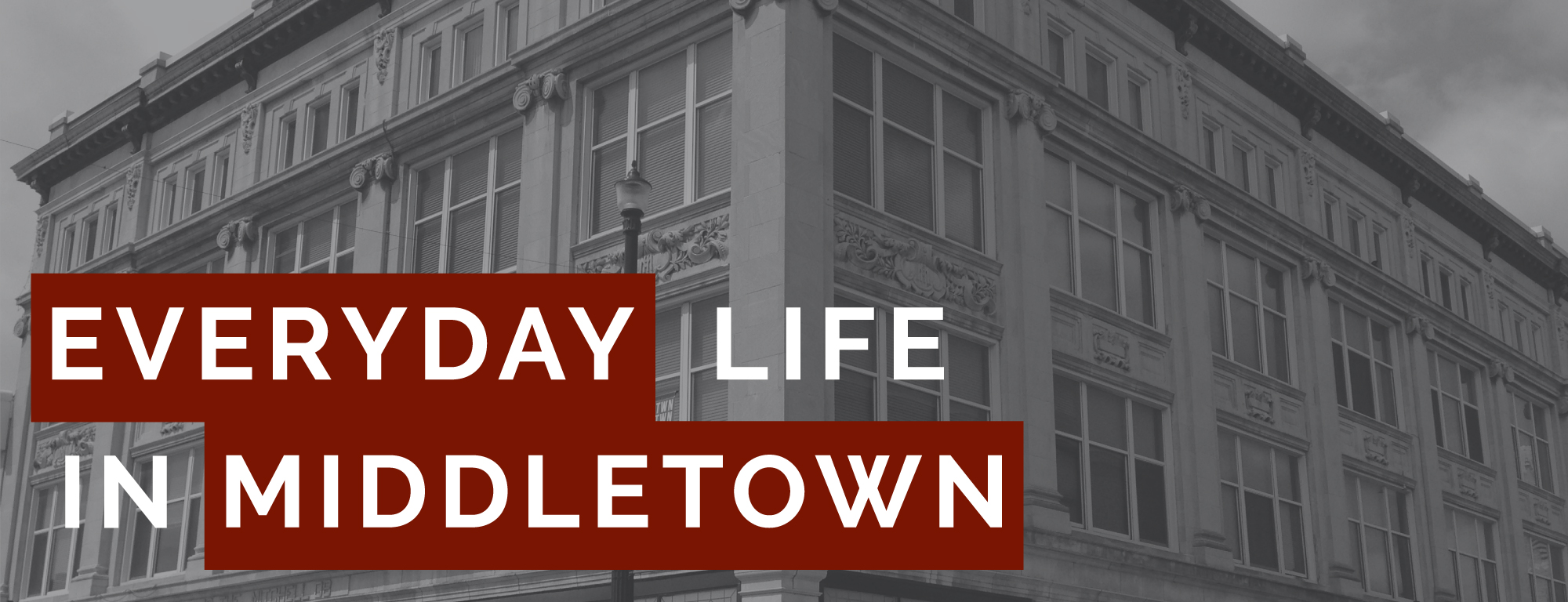From the beginnings of Everyday Life in Middletown (EDLM), Muncie has been at the center of work. We take our name, of course, from the famous, best-selling book on Muncie by Robert and Helen Lynd, Middletown: A Study in Modern American Culture (1929). We wanted to tap into the tradition of “Middletown Studies” and to expand and revise it.
Although the Lynds spent considerable amounts of time and energy getting to know Muncie and its inhabitants, in the end they approached the city’s residents as their subjects. Hundreds of scholars and journalists have followed that model, descending on Muncie and examining the lives of locals as if investigating the behavior of an exotic species. A key part of our aim with EDLM is to invert this method, creating a space where Muncie’s citizens can tell their own, unfiltered stories about their ordinary experiences, and have a say in how the project takes shape.
Obviously, you can study everyday life anywhere. In its earliest stages, anthropology grew out of field studies of the everyday practices of tribal peoples in distant corners of the world. In Britain, Mass Observation—our other primary inspiration—decided to study everyday life at home in the late 1930s, to conduct what they called “An anthropology of ourselves.”
Our primary activity—the collection of day diaries in which several dozen volunteers keep detailed records of their activities, thoughts, and feelings on the same day—is based on one of Mass Observation’s initial projects. They got more than 1,500 people to keep diaries on May 12, 1937, the day of George VI’s coronation.
Unlike the Mass Observers, who had national ambitions, Everyday Life in Middletown is deliberately focused on a single community. Muncie is at the center of the lives of all of our volunteers. Though some are lifelong residents, some recent transplants, and others people who work here while living nearby, all are part of the community and have psychic and other investments here.
There are other reasons why Muncie is a good place to ground a project on everyday life. It is an interesting and unique place. It is also, at the same time, representative of a number of larger patterns in the socioeconomics and politics of the United States at the present moment: a historically industrial city trying, with mixed success, to adapt to new economic realities; a college town with its own set of town-gown issues; a community marked by the inequality and displacement that has fueled the polarities of current national politics.
Recently we decided to take another page from Mass Observation: we issued what they call a “directive” (a questionnaire) asking for people to share attitudes, thoughts, feelings, etc. on a specific topic.
It seemed natural that our first directive should be about Muncie. This way, our volunteers could do more than recount their daily lives, they could have a say in how the community as is represented.
We asked our volunteers to focus on one question: What do you think and feel about Muncie? As with our diaries, we gave them license to be as creative as they liked and to go into as much detail as they could manage. As a spur to thinking, we also asked:
•Are you happy with where you live? Do you feel like you belong?
•Do you expect to stay here for long? What are or will be some of the considerations in deciding how long you stay here?
•How would you describe Muncie to someone who has never been here? What are its most distinctive characteristics?
•Do you think the ways other people think about Muncie are the same ways you think about it? How do you your thoughts and feelings about Muncie differ from its public image (from media or word-of-mouth around the state and beyond)?
•What are your feelings about Muncie’s future? What are your hopes for Muncie? How do you expect Muncie will fare in the years ahead? What changes do you expect?
And they answered us, in surprisingly candid and unrestrained fashion. Their directives display an astounding array of thoughts and feelings about our city, from passionate boosterism to sharp critique. The keynote of the directives may indeed be intensely mixed feelings. Taken together, they offer us a complex, often contested account of what Muncie is, and what it might become.
In upcoming weeks we will feature a set of these directives in a series called “Four Muncies.” Each week we will highlight some of the most detailed and striking responses.
For now, we invite you to read around in the directives and get a taste of what some of your most observant neighbors have to say about Muncie.


